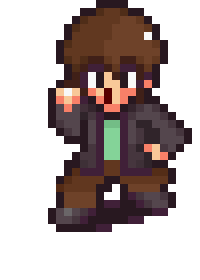What Came Before Kaizo? [The History of Unfair Games]
/Thumbnails from JaidenAnimations, Huebi, and Patterrz // Image edited by Me
“Kaizo” is a word that strikes fear into the hearts of many. If you’re not familiar with the term, just look it up on YouTube, and you’ll quickly find thumbnails featuring people having the time of their lives.
Game: Kaizo mario world // image courtesy of gifer
The term “kaizo” refers to games—or modified versions of existing games—that are intensely difficult, often to the point of being unfair. It began with the release of Kaizo Mario World, a hack of Super Mario World, and you can see what it looks like in the image on the right.
While the term is most commonly associated with Mario games, people have since made similar hacks for series like Pokémon, The Legend of Zelda, and more. Kaizo games are now so infamous that some standalone indie games, like Linked Mask and Impulse, even use the term to describe their gameplay.
Kaizo games tend to be made by hobbyists, and the goal is to make them as brutal and unfair as possible. You might think this would just frustrate people, but they remain incredibly popular online. Given this fact, you might wonder whether games with unfair difficulty were notorious prior to Kaizo games and the Internet. The answer is yes, and the first game to do it was Takeshi's Challenge back in 1986.
Takeshi’s Challenge box // image courtesy of deviantart user retroreloads
Takeshi’s Challenge is a game directed by Takeshi Kitano, who’s famous as a film director, comedian, TV host, and more. Back in 1986, he worked with Taito, the company behind prolific games like Space Invaders, to create a game with his name attached. It’s renowned for being one of the most frustrating and confusing games ever made. For just a few examples of what you have to do over the course of the game, none of which are explained to you:
To decipher a treasure map, you have to leave the game running idle for a full hour. Touching the controller even once forces you to restart the whole process, including re-obtaining the map! (You can alternatively leave the game running for more than five minutes, but less than ten, then scream into the microphone.)
At one point, there’s a side-scrolling shooting section similar to games like Gradius. But taking a single hit gets you a Game Over, and the controls are intentionally obtuse, preventing you from moving upwards!
Like many older games, your progress is saved and loaded using passwords. But you can even get a Game Over on the title screen if you input your password wrong!
These are just a few examples. The entire game is full of confusing mechanics and frustrating sections just like those. And again, none of this is explained to you, making it difficult to know how to get to those sections to begin with. Many games from this era, like Battletoads and Ghosts ‘n Goblins, are known for being difficult, but Takeshi’s Challenge is nearly unplayable without a guide.
source: game center cx // image edited by me
So how did a game like this come to be officially released by an actual game company? The very first episode of the popular Japanese TV show Game Center CX, released in 2003, offers some insight.
In this episode, the show’s host, Shinya Arino, meets with Tetsuo Egawa, who was on the sales team for Takeshi’s Challenge. According to Egawa, the game’s developers would meet with Kitano for dinner. Kitano would become drunk and provide ideas for the game… and the developers would implement all of them. It also seems that the frustration was intentional, as the game’s ending features Kitano asking why the player took it so seriously. It was a game intentionally designed to be unfair, just like the Kaizo games that came years later!
game: takeshi’s challenge // image courtesy of nico nico pedia
Yet somehow, just like Kaizo games, Takeshi’s Challenge gained wide notoriety. The game sold 800,000 copies, got inducted into a Hall of Fame for its infamy at Tokyo Game Show 2007, and there were even plans to do a stage adaptation of it! Perhaps most amazingly, Microsoft tried to get a sequel made for the original Xbox! It didn’t end up happening, but it goes to show the legacy the game has.
What can we learn from this? Well, plenty of games fade into obscurity because they’re unintentionally annoying to play, but maybe the key to making a popular game is to make it annoying on purpose.
Wesley Naylor is a second-year student of the Professional Writing program who thinks games are rather neat! He likes learning about what goes into the development of games and seeing how they’ve evolved over time.
He also likes writing... and on this blog, he can combine those interests, just for you!








